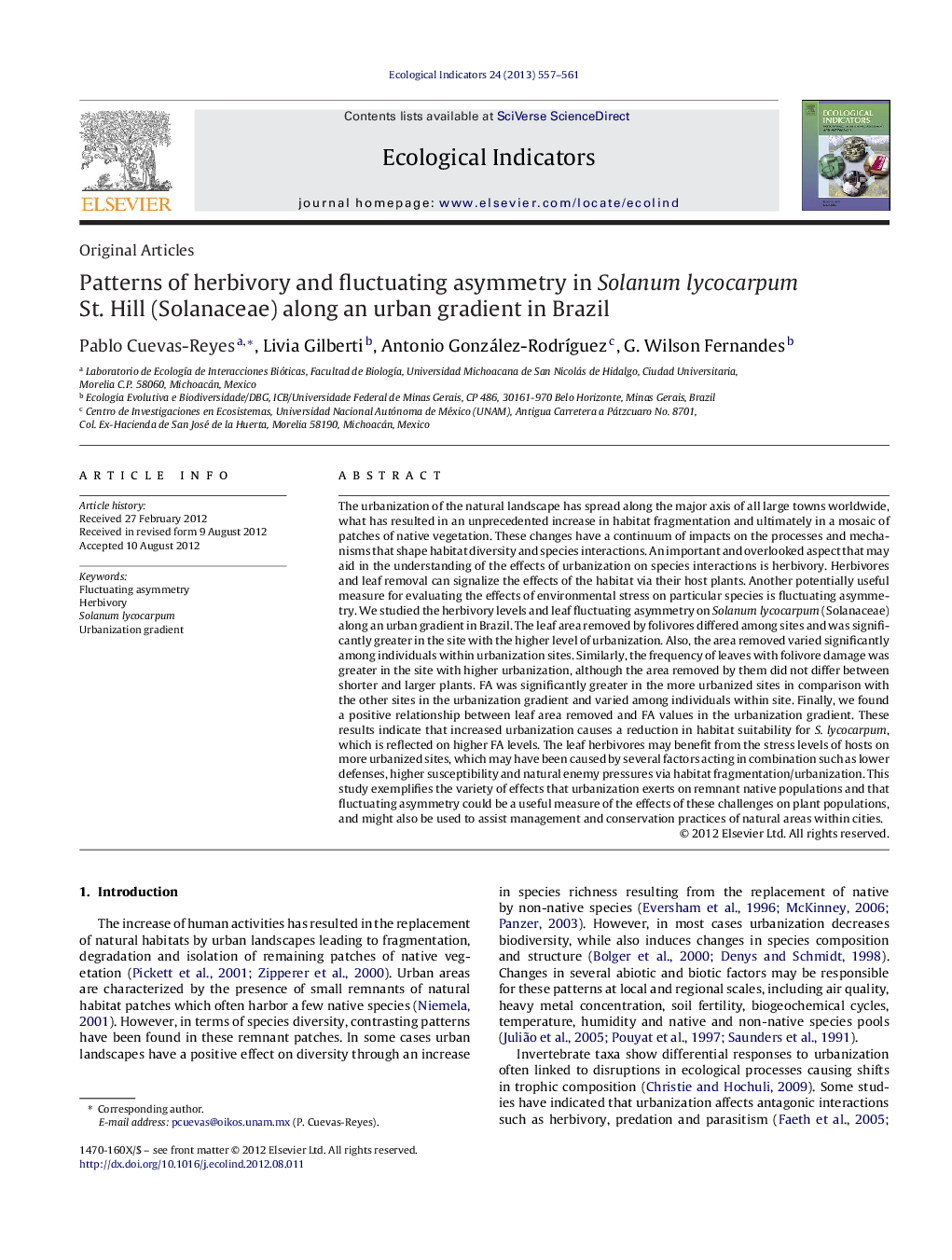| کد مقاله | کد نشریه | سال انتشار | مقاله انگلیسی | نسخه تمام متن |
|---|---|---|---|---|
| 4373676 | 1617176 | 2013 | 5 صفحه PDF | دانلود رایگان |

The urbanization of the natural landscape has spread along the major axis of all large towns worldwide, what has resulted in an unprecedented increase in habitat fragmentation and ultimately in a mosaic of patches of native vegetation. These changes have a continuum of impacts on the processes and mechanisms that shape habitat diversity and species interactions. An important and overlooked aspect that may aid in the understanding of the effects of urbanization on species interactions is herbivory. Herbivores and leaf removal can signalize the effects of the habitat via their host plants. Another potentially useful measure for evaluating the effects of environmental stress on particular species is fluctuating asymmetry. We studied the herbivory levels and leaf fluctuating asymmetry on Solanum lycocarpum (Solanaceae) along an urban gradient in Brazil. The leaf area removed by folivores differed among sites and was significantly greater in the site with the higher level of urbanization. Also, the area removed varied significantly among individuals within urbanization sites. Similarly, the frequency of leaves with folivore damage was greater in the site with higher urbanization, although the area removed by them did not differ between shorter and larger plants. FA was significantly greater in the more urbanized sites in comparison with the other sites in the urbanization gradient and varied among individuals within site. Finally, we found a positive relationship between leaf area removed and FA values in the urbanization gradient. These results indicate that increased urbanization causes a reduction in habitat suitability for S. lycocarpum, which is reflected on higher FA levels. The leaf herbivores may benefit from the stress levels of hosts on more urbanized sites, which may have been caused by several factors acting in combination such as lower defenses, higher susceptibility and natural enemy pressures via habitat fragmentation/urbanization. This study exemplifies the variety of effects that urbanization exerts on remnant native populations and that fluctuating asymmetry could be a useful measure of the effects of these challenges on plant populations, and might also be used to assist management and conservation practices of natural areas within cities.
Journal: Ecological Indicators - Volume 24, January 2013, Pages 557–561